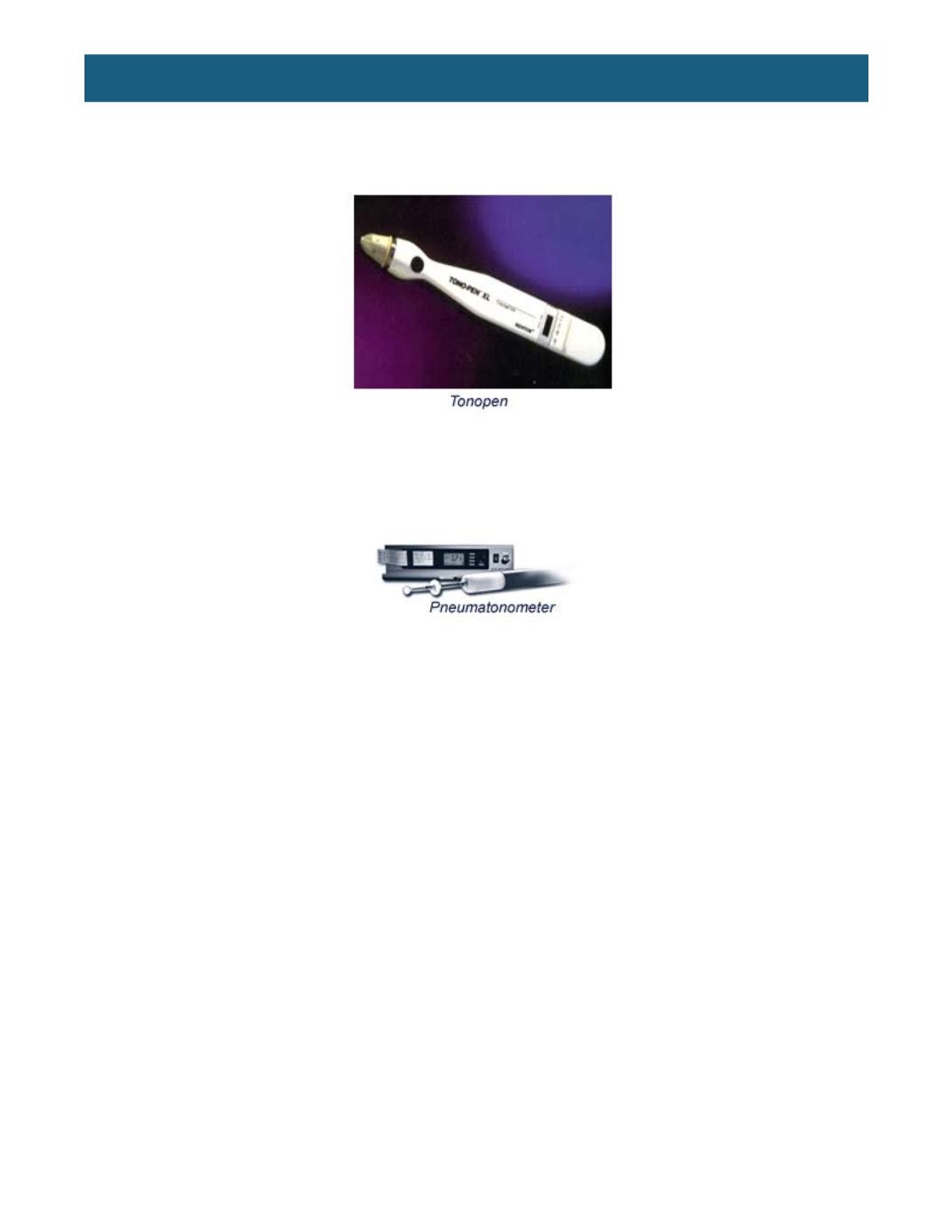

© 2016, BSM Consulting
9
Basics of Glaucoma
millimeters of mercury. The reliability scale indicates the likely percentage of error so that the technician
can repeat the measurements as necessary. The key to a successful measurement of IOP with the
Tonopen is the perpendicularity of the tonometer against the cornea.
Pneumatic tonometer, or pneumatonometer
uses a pressure-sensing device consisting of a gas-filled
chamber covered by a Silastic diaphragm. The gas in the chamber escapes through an exhaust vent. As
the diaphragm touches the cornea, the gas vent decreases in size, and the pressure in the chamber
rises. This instrument has proven especially useful in the presence of corneal scars or edema.
Schiotz tonometry
determines IOP by measuring the indentation of the cornea produced by a known
weight. The indentation is read on a linear scale on the instrument and is converted to millimeters of
mercury by a calibration table found with the instrument. The concepts of indentation and sceral rigidity
were the basis behind Schiotz tonometry. The globe becomes hard when an eye is maintaining an
elevated pressure. Conversely, the softer the globe, the lower the IOP is likely to be. When the Schiotz is
placed on the prone patient’s cornea, gram weights may be added to achieve balance of the scale. The
conversion chart converts the gram weight to millimeters of mercury. The greater the weight needed to
indent the cornea, the lower the IOP. Because of a number of practical and theoretical problems, Schiotz
tonometry is rare.
Tactile tension
is a gross estimation of intraocular pressure determined by touching the eye to detect a
hard or soft globe. This test may be used with uncooperative patients, but is inaccurate even in very
experienced hands. The average eye will have the same amount of resistance as the ball of the hand. In
general, tactile tensions are useful only for detecting large differences between two eyes. This is most
frequently used to determine the pressure of the eye at the end of intraocular surgery.
















